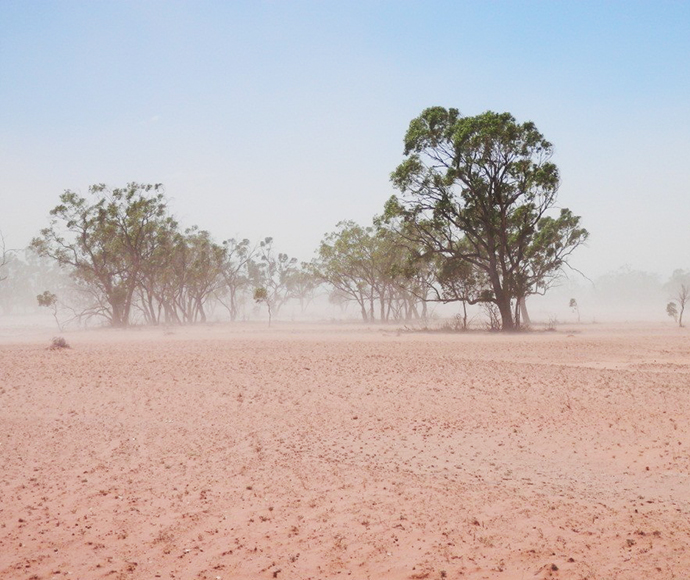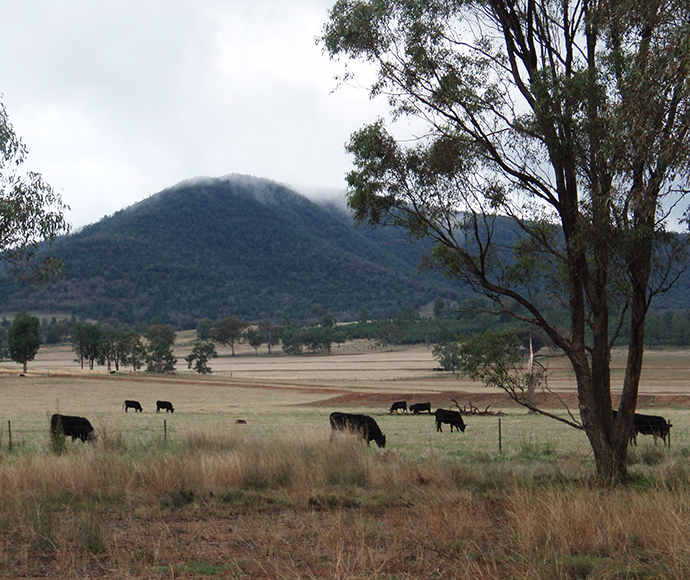Dust storms could be around the corner, how science can help us prepare
Preparing for dust storms.
Dust storms pose a significant threat to the environment, public health and the economy. With predictions of El Niño, increased drought and the subsequent lack of groundcover vegetation, scientists forecast New South Wales can expect an elevated risk of dust storms in the next few years. In this article, we will delve into research insights from our scientists, discussing the impact of dust storms, the importance of land management practices, and measures that can be taken to prepare for these natural phenomena.
Calm before the storm
The Bureau of Meteorology has shifted to an El Niño alert, indicating a 70% chance of El Niño formation. El Niño events typically suppress rainfall in eastern Australia during winter and spring, setting the stage for drought conditions.
The next 3 months show a reduced rainfall forecast across New South Wales, heightening the likelihood of drought and subsequent dust storms.
In addition, our air quality scientists have been keeping a close eye on satellite imagery looking at the recovery of winter groundcover vegetation in the west of the state. Typically groundcover recovery during winter averages around 40%, but this season it is shaping up to be around 20%. This is very similar to 2016 and 2017 the preceding years to the 2017–20 drought.
Beating the dust
Fortunately, there is an opportunity to prepare and take preventative and adaptative actions against the impending increase in dust storms. Our scientists have monitored dust storms in rural New South Wales for over 30 years. Over this time, tracking dust through several major droughts, we have learnt that New South Wales has 18 months to prepare for a dust storm. Monitoring dust levels through the rural air quality monitoring network can serve as an early warning system, highlighting to land managers the need to take action when dust levels rise and ground cover decreases. By responding promptly, and implementing proactive measures, the impact of dust storms can be minimised.
Preparing pastures key to prevention
Landholders are already aware of climate and weather patterns and are proactively taking action to reduce the occurrence and impact of dust storms. The implementation of good land management practices can help minimise the impact of these events. For example, destocking grazing animals in winter to encourage groundcover regeneration can be crucial, as well as reducing excessive grazing during hot and dry periods. Recently published research showed that landholders can mitigate the risk of dust storms and protect their valuable topsoil by reducing animal grazing and maintaining a minimum level of groundcover of at least 50%.
Winter rainfall drives pasture growth, particularly in southern New South Wales. While the landscape seems favourable currently, with a significant increase in ground cover compared to previous years, projections indicate a lower growth this winter. This scenario mirrors patterns seen in the last drought, suggesting a potential drop in groundcover heading into next summer. Less vegetation leads to increased frequency and severity of dust storms.
For cropping country, leaving stubble in place instead of burning it off protects the soil and reduces the likelihood of dust storms. Landholders adopting such practices are not only safeguarding their properties but also providing a significant public service. By preventing dust storms, they also contribute to the smooth operation of urban areas like Sydney, keeping transportation systems functioning and reducing the immense cost of cleaning dust from homes and businesses.


